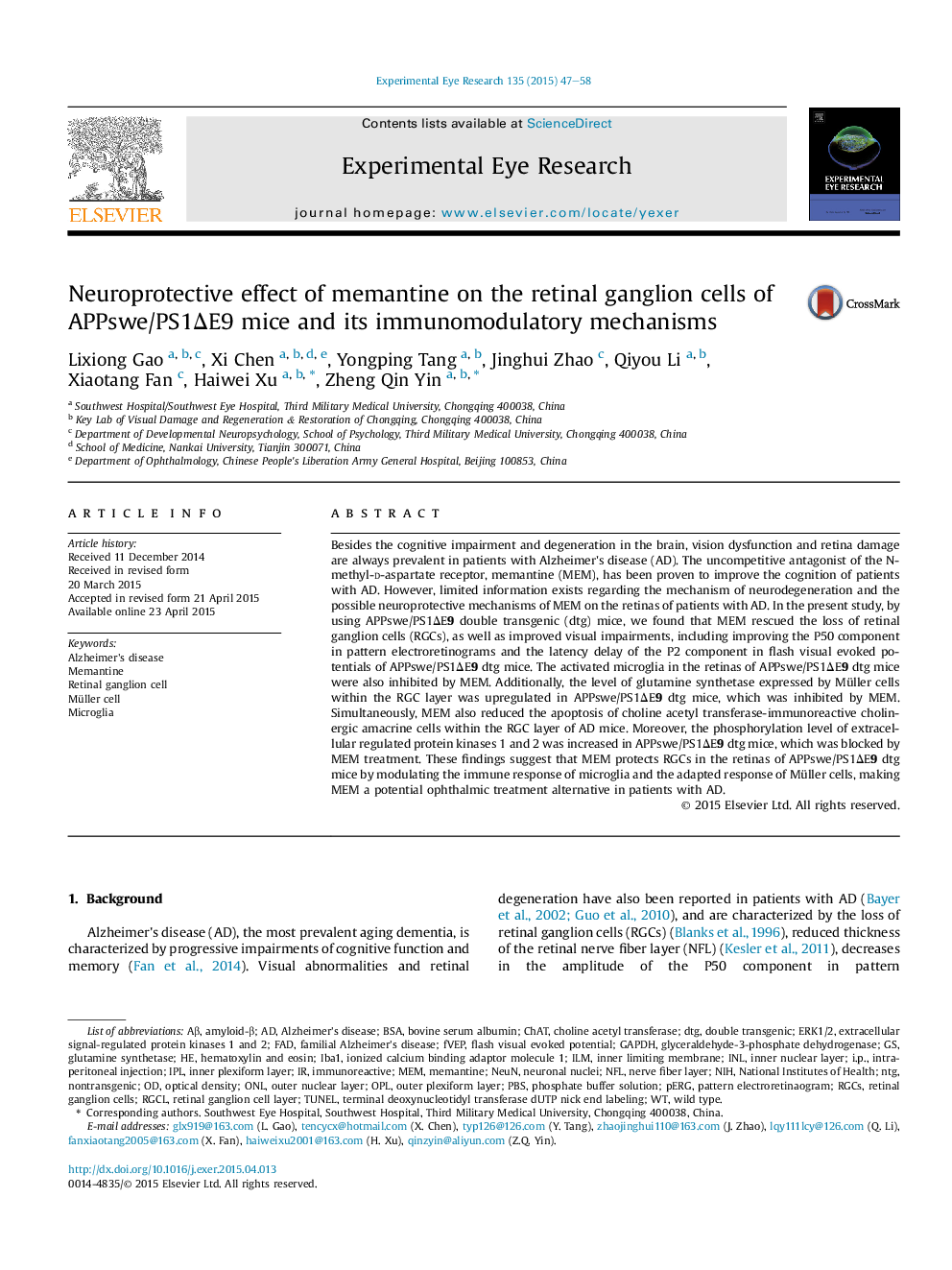| کد مقاله | کد نشریه | سال انتشار | مقاله انگلیسی | نسخه تمام متن |
|---|---|---|---|---|
| 6196724 | 1602587 | 2015 | 12 صفحه PDF | دانلود رایگان |

- Memantine could rescue the loss of RGCs in AD transgenic mice's retina.
- Interaction of Müller cells, microglia and amarcine cells played role in AD retina.
- Memantine modulated interactions of microglia and Müller cells in AD retina.
- The immunomodulating mechanism of memantine was mediated via ERK1/2 pathway.
Besides the cognitive impairment and degeneration in the brain, vision dysfunction and retina damage are always prevalent in patients with Alzheimer's disease (AD). The uncompetitive antagonist of the N-methyl-d-aspartate receptor, memantine (MEM), has been proven to improve the cognition of patients with AD. However, limited information exists regarding the mechanism of neurodegeneration and the possible neuroprotective mechanisms of MEM on the retinas of patients with AD. In the present study, by using APPswe/PS1ÎE9 double transgenic (dtg) mice, we found that MEM rescued the loss of retinal ganglion cells (RGCs), as well as improved visual impairments, including improving the P50 component in pattern electroretinograms and the latency delay of the P2 component in flash visual evoked potentials of APPswe/PS1ÎE9 dtg mice. The activated microglia in the retinas of APPswe/PS1ÎE9 dtg mice were also inhibited by MEM. Additionally, the level of glutamine synthetase expressed by Müller cells within the RGC layer was upregulated in APPswe/PS1ÎE9 dtg mice, which was inhibited by MEM. Simultaneously, MEM also reduced the apoptosis of choline acetyl transferase-immunoreactive cholinergic amacrine cells within the RGC layer of AD mice. Moreover, the phosphorylation level of extracellular regulated protein kinases 1 and 2 was increased in APPswe/PS1ÎE9 dtg mice, which was blocked by MEM treatment. These findings suggest that MEM protects RGCs in the retinas of APPswe/PS1ÎE9 dtg mice by modulating the immune response of microglia and the adapted response of Müller cells, making MEM a potential ophthalmic treatment alternative in patients with AD.
Journal: Experimental Eye Research - Volume 135, June 2015, Pages 47-58